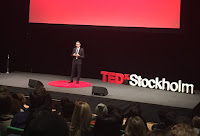Five Ways to Look More Impressive in a Video Call
Watch the gallery view in any video conference call or watch an inexperienced speaker trying to deliver a video workshop and you will notice that some people manage to look more impressive than others. How do they do it? And how can anyone do it without fancy equipment? There are five things that anyone can do right now: CAMERA AT EYE LEVEL . Place your camera so that the lens is at the same level as your eyes. Don’t lean over a laptop or phone. If you have a standing desk just raise it up to the right level. Otherwise place your laptop on a pile of boxes or books to bring it to the right height. If you are using your phone you can fix it to a tripod or place it on a shelf, but remember to always use it horizontally, like a TV. LIGHTING AND BACKGROUND . Before you start the call always check the lighting and background. Try to get as much light in front of you as you can – not behind or above – and keep the background uncluttered. Watch out for reflections on glasses and make s...





